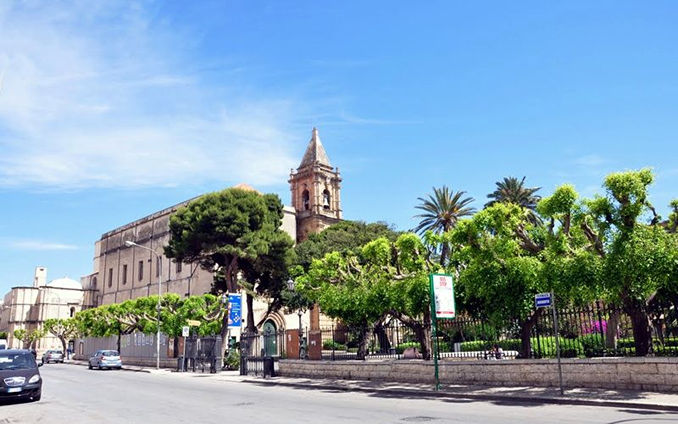


Or ...





To understand the origin of the devotion that not only people from Trapani have towards the statue of the Madonna, we must go back several centuries to 1291 with the legendary arrival of the statue in the port of Trapani, when the sanctuary did not yet exist.
It is said that this statue, which was made in Tuscany by the sculptor Nino Pisano, was worshiped in Syria, a country which was as it is today very politically unstable at that time. This fact led a Pisan Knight Templar, called Guerreggio to decide to bring the statue back to Pisa on board a ship in order to prevent the sacredness of the effigy from being desecrated by the Muslims.
At that time navigation was not very safe because of frequent storms which put a strain on the vessels of the time, so after a storm the ship was forced to take shelter in the port of Trapani. While waiting for repairs to be carried out, the work of art was taken to the church of St. Maria del Parto, where the Carmelites once lived, before being moved to the Sanctuary of the Madonna of Trapani. Once the ship repairs were finished, it was going to be taken aboard the ship for its return to Pisa. But tradition and reliable documentary sources tell that the oxen, instead of heading towards the Port, headed in the direction of the Shrine of Our Lady of Trapani, as if to say that the statue from Trapani should not be moved away and that its proper dwelling place should be, in fact, in the Sanctuary of the Madonna of Trapani, which at that time was not the whole sanctuary, which we know today, but a small country church.
Faced with this occurrence, which the people considered to be supernatural, Guerreggio, the commissioner of the trip, decided that the new home of the statue of the Madonna would be the Sanctuary of the Madonna of Trapani.
Then as now, the cult and devotion of the statue attracts many believers who, especially every year on August 16th, after a pilgrimage lasting fifteen days, called "quindicina" (fifteen), are welcomed into the Sanctuary of the Madonna of Trapani. The Madonna of Trapani, in addition to being co-patron of Trapani, was also declared the patron saint of the Diocese in 2007.
The statue with the image of Mary used to be carried in a procession starting from the Sanctuary of the Madonna of Trapani and moving in the direction of the city centre, but it always came back damaged to the chapel of the Sanctuary. For this reason, in order to preserve its integrity, it was decided that 1954 would be the last year in anticipation of its restoration, which would bring it back to its past splendour. Since then a copy, first in wood and then in marble, the latter more closely matching the original and kept in the Cathedral, has been carried through the streets of the historic centre. The festivities end with a firework display.
The Sanctuary of the Madonna of Trapani does not only house the statue of the Madonna of Trapani, but contains within it the statue of the silver reliquary of St. Albert, the patron saint of the city, His feast day is August 7th and in 2007, the seven hundredth anniversary of his ascension to heaven was celebrated.
Other marvels, although little known, are to be found in the sanctuary including the Sailors' Chapel, built in the mid-fifteenth century, and the Fisherman's Chapel, on which work began in 1476.
As Trapani is a city of sea, it is almost natural that the sailors built devotional and funeral chapels at the same time, to be closer to the veneration of the Madonna.
Or ...



